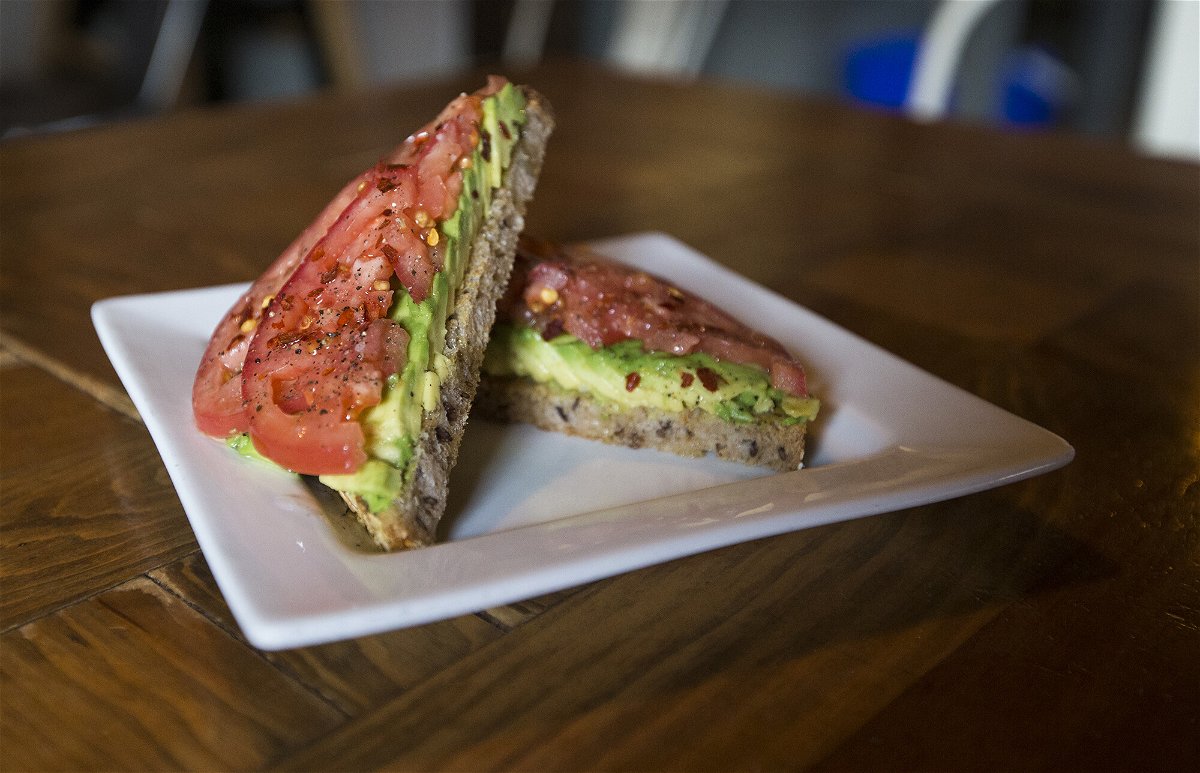Grocery prices are soaring. But this food favorite is getting cheaper

Avocados are enjoying unprecedented popularity lately and are popping up in menu items such as avocado toast and in burgers.
By Parija Kavilanz, CNN Business
There’s at least one item in the grocery store that is getting less expensive: avocados.
A significant supply glut of the buttery fruit has triggered a drop in wholesale prices, sending store prices lower as well.
With the overall cost of grocery items up a stunning 13% compared to last year, cheaper avocados couldn’t come at a better time for inflation-weary households desperate to catch a break on their shopping bills.
After surging in the first-half of 2022, the wholesale price for a carton of 48 mid-sized avocados has dropped 35% to under $30 year-over-year, down 67% from the peak reached in the last week of June, said David Magana, senior fresh produce analyst with Rabo AgriFinance.
At the store level, the average unit price for avocados also has reversed course, declining 2.6% in September from a year ago. That’s a big drop from the 31% year-over-year spike seen in July and August’s 13.9% bump, according to the latest numbers from market research firm NielsenIQ, which tracks point of sale data from retailers.
What has flipped the switch on the cost of avocados?
A confluence of multifaceted issues — including geopolitics — has led to an overabundance of the fruit, said Richard Kottmeyer, managing director of food, agriculture and beverage with FTI Consulting.
As prices cool off, so many avocados are floating around right now that in some instances they are being given away for free.
“It’s one of those odd situations where this extreme oversupply of avocados is only possible because of a perfect storm of Black Swan events,” Kottmeyer said. “For consumers, avocados right now are the green lining to the storm clouds of food inflation.”
Last month in Philadelphia, local food distribution nonprofit Sharing Excess held a three-day event to hand out thousands of surplus avocados to anyone who wanted them. More than 300,000 free avocados were claimed in under three hours, according to The Philadelphia Inquirer.
Perfect storm
Bumper avocado crops around the globe are leading the supply boom.
The US avocado market is dominated by Hass avocados from Mexico, which accounts for 92% of supply. A much smaller percentage of avocados come from Peru and from farms in California and Florida.
“In the first half of 2022, avocado shipments from Mexico were 25% lower compared to the record-high shipments we saw in 2021,” said Magana.
Shoppers saw a surge in prices for avocados in February after a brief suspension of imports from Michoacan in Western Mexico following a threat to a US official there. The ban was lifted a week later and imports resumed.
In April, Texas implemented heightened border inspections of commercial trucks carrying produce and other commodities from Mexico, which further delayed avocado shipments to the US. Those regulations were quickly lifted, but not before causing a further run-up in store prices.
As shipments began to flow following the stoppages, Mexican farmers were also experiencing a better harvest than expected this year.
“Most of the time, avocado crops alternate the yield year to year. So a big crop one year is followed by a smaller crop the next,” said Magana. But sometimes farms get a back-to-back high-yield seasons, as is happening this year.
Layered on top of that are bumper global avocado crops, in such key producing countries as Australia and Peru, that are clashing with geopolitics in a way that has amplified the oversupply, Kottmeyer said.
“Essentially, the US gets most [of its] avocados from Mexico and Peru. Bumper crops would usually be sold across the globe,” he said. “Europe has significant food inflation, so when avocado prices got high earlier this year, the demand went down in that market.”
China, another big market, is dealing with pandemic-related shutdowns, port congestion and closures. The Russia-Ukraine conflict, too, has hurt exports and shipments of avocados into and around Europe, he said.
“Much of the avocado oversupply has wound up in US,” Kottmeyer said. Avocados have about a three to four week shelf life, longer than most fruits and vegetables, which allows them to be more easily and quickly diverted to other markets, he added.
How long will it last?
Good news for consumers: The avocado glut should last at least into the middle of 2023, said Magana.
“We can’t predict weather changes, however. A spike in temperatures or a sudden drop can impact production,” he said.
Avocados are already enjoying unprecedented popularity and are popping up in unexpected ways in menu and grocery items — everything from avocado toast and burgers to grilled avocados and avocado oil for cooking and in salad dressings.
“Demand for avocados is certainly not decreasing,” said Kottmeyer “The Super Bowl is the biggest consumption event for avocado, but we’re certainly seeing many more eating occasions for it.”
The-CNN-Wire
™ & © 2022 Cable News Network, Inc., a Warner Bros. Discovery Company. All rights reserved.